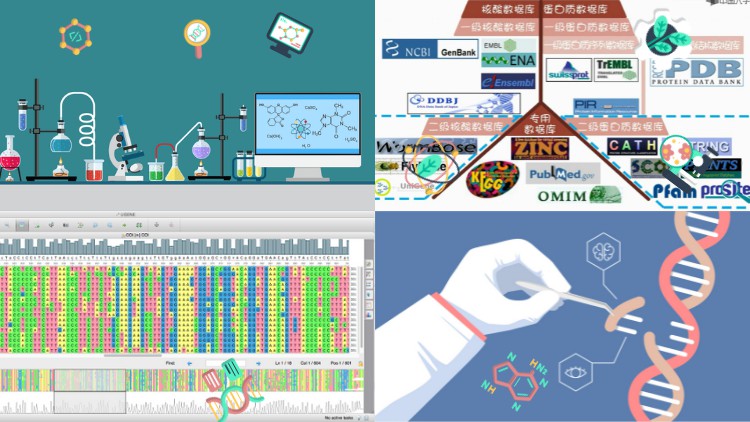
Updated and To the point course of bioinformatics for beginner students and Academic Professional to peruse their career
What you will learn
You will learn about the history and applications of bioinformatics
You will learn Basic demonstration of Bioinformatics tools
Different databases used in bioinformatics
Interpretation of Sequence Alignment
Tools Used in sequence Alignment in bioinformatics
Alignment Methods and Representation
They will be able to use and know different categories of sub-databases of NCBI.
Plant Genome Databases
Primary Databases in Bioinformatics
Secondary Databases in Bioinformatics
Concepts of CRISPR technology, its Versions and working mechanism
Students will be able to use different tools for Sequence Analysis and will know different categories of sub-databases.
Crisper working mechanism in labs
skill of designing gRNA through bencheling tool.
You will be able to design your first CRISPR lab project.
Description
Updated and to the point course. It’s worth your money and time! This Course runs through 4 segments of main bioinformatics topics. Students will learn the basics of bioinformatics, starting from biological databases to genomics analysis and crisper technology. This is a self-paced course that suits your daily busy schedules. Self-paced gives you the freedom to complete each topic based on your own available time before proceeding to the next chapter without hurry. I will teach you about 4 fundamental topics in Bioinformatics to you.
Segment 1 – Introduction to Bioinformatics
We will start this course with a brief definition of Bioinformatics – what exactly it institutes, and the importance of this field in the scientific world. Also, I will share with you the history of how Bioinformatics came into being – the reason why it was invented.
Segment 2 – Bioinformatics Databases
One of the reasons why Bioinformatics exists is due to the increased number of biological datasets. These are huge scientific research outputs that need to be managed. In this chapter, you will learn first of all how data is stored and manipulated. Next, I will begin to introduce you the nucleotide databases. Bioinformatics is all about managing data and providing scientific knowledge. In this chapter, we will also focus on protein databases. These two types of databases complement each other and both are important for your studies.
Segment 3 – Sequence Alignment
Have you ever wondered how two sequences are being compared using two different sequence alignment algorithms? Think about aligning 100 DNA sequences at one time – is there a way to perform the multiple sequence alignment? In this chapter we will teach you how to perform Global and Local sequence alignments – it’s all about basic concepts of scoring matrices. We Will also discuss the tools used for Sequence Alignment in pairwise and multiple alignments.
Segment 4 – Genome Analysis
In this module, you will learn about a genome. We will look closely into both structural and comparative genomics. The detail parts begin with the sequencing technologies and are followed by crisper cas 9 technologies.
Genome editing is a method that lets scientists change the DNA of many organisms, including plants, bacteria, and animals. Editing DNA can lead to changes in physical traits, like eye color, and disease risk. Scientists use different technologies to do this.
CRISPR technology is a simple yet powerful tool for editing genomes. It allows researchers to easily alter DNA sequences and modify gene function. Its many potential applications include correcting genetic defects, treating and preventing the spread of diseases, and improving crops. However, its promise also raises ethical concerns.
Bioinformatics has become a buzzword in today’s world of Science. About one or two decades ago, people saw biology and computer science as two entirely different fields. One would learn about living beings and their functions whereas the other would learn about computers and underlying theories. However, at present, there seems to be a mere separation between the two fields, and this new field, bioinformatics, has emerged as a combination of both Computer Science and Biology.
I have prepared several sets of quizzes and assignments for you to solve. Based on previous experiences with other students, I am aware that some of you might need a one-to-one discussion therefore you are welcome to request an online meeting/discussion session with me. Just to help you progress in this course. Register now to start learning about what Bioinformatics can do to help you, be it in research routines or for career development, or simply just for personal interest. Well, being honest I love these new technologies and I love learning about these technologies that’s why I am sharing this course so you guys can also take advantage and get the idea of this amazing technology.
The Course will be available to you for a lifetime and pretty much everything is easy to learn if you start from top to bottom and certificate is also available to you.
Content